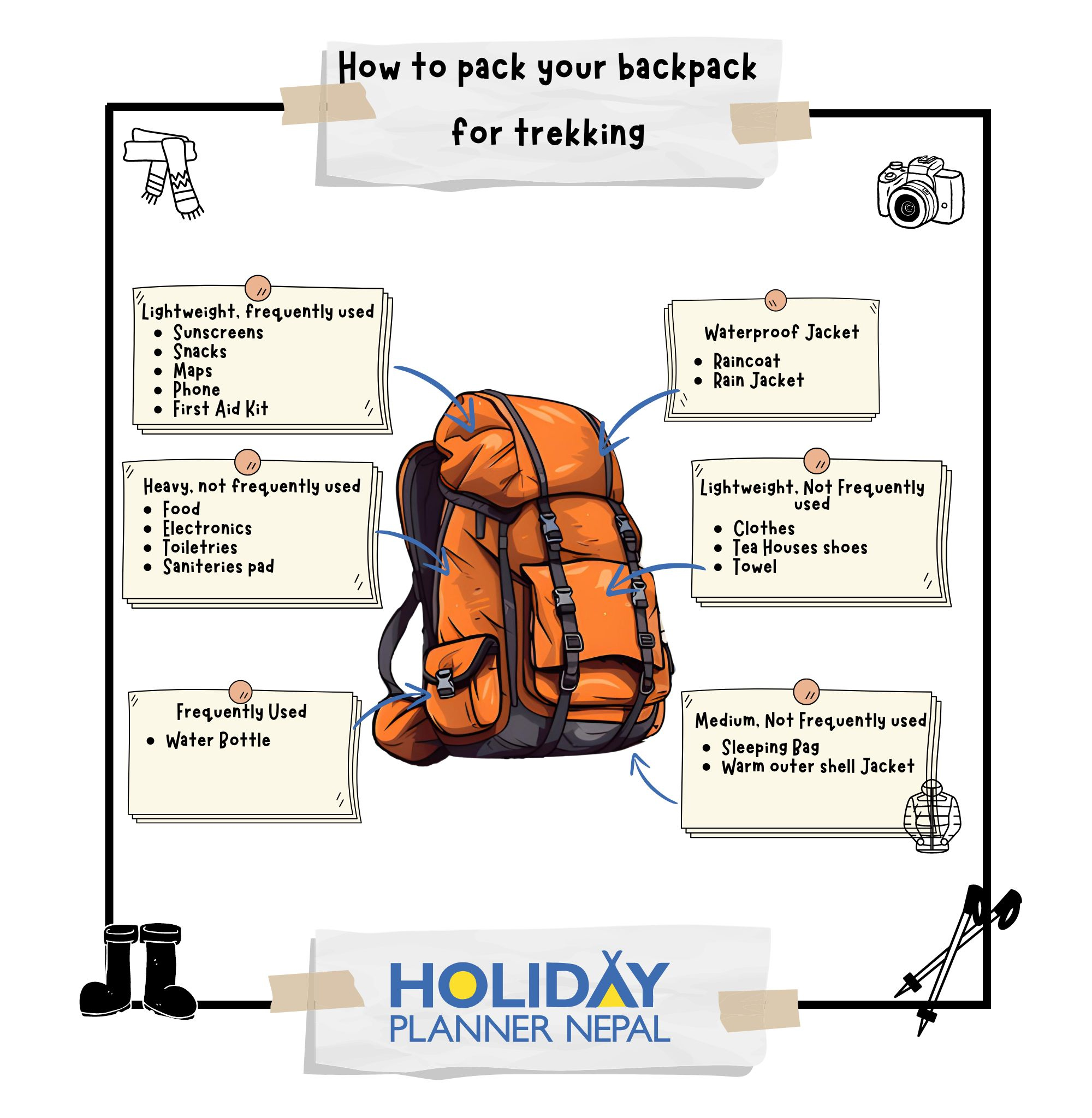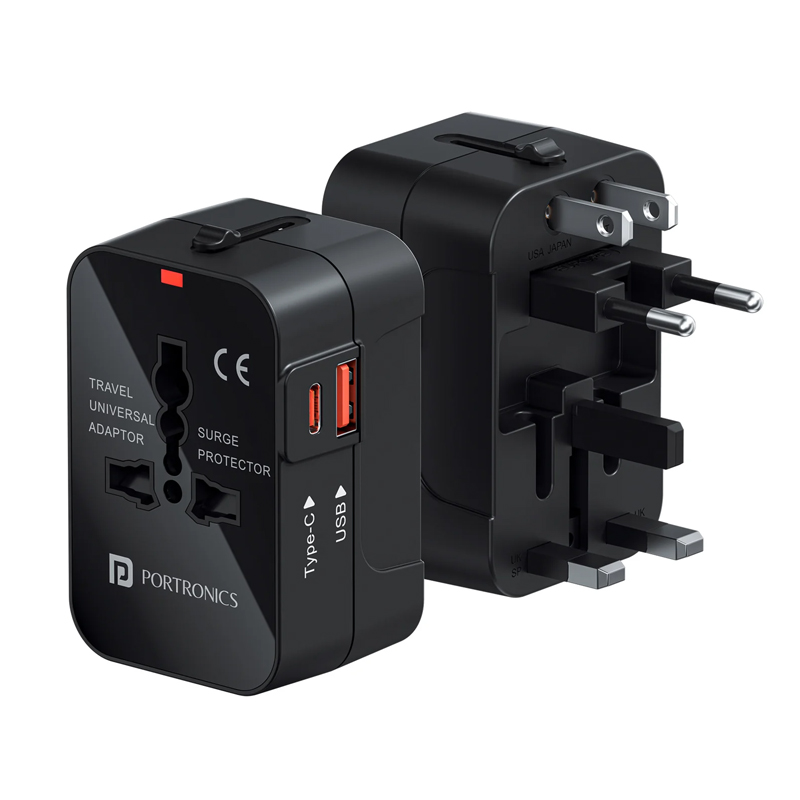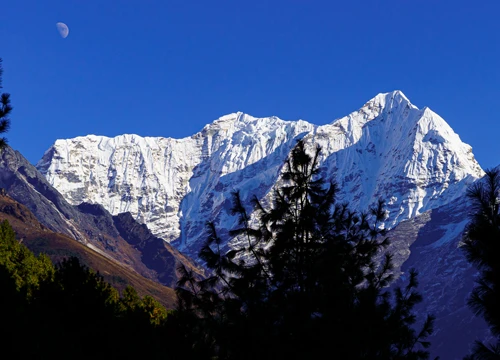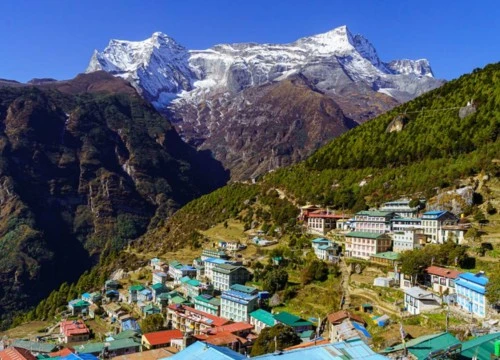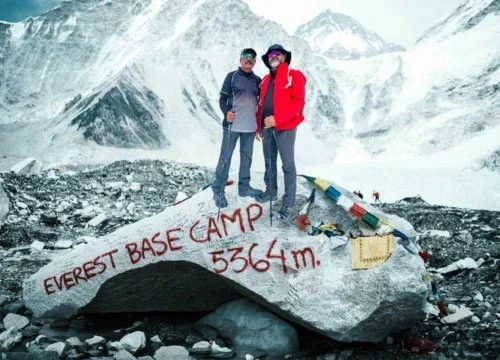How does the Gokyo Valley trekking begin and end?
Gokyo Valley Trekking begins after a thirty-five-minute flight from Kathmandu to Lukla's tiny airstrip. The adventure then starts following a trail along the bank of the Dudh Koshi River until reaching the gateway of the Everest region, Namche Bazaar.
Namche Bazaar is a major stop in the Solu-Khumbu region. Everest View Hotel, Sherpa Cultural Museum, and Irish Pub are the significant attractions of Namche, with various accommodation options ranging from teahouses to Luxury houses. We will have rest days in the Namche bazaar villages, allowing us to explore the region. Also, at Namche, we interact with the mountain people known as Sherpa, who are famous for mountain climbing, and we acclimate with these beautiful people. We can also stay at local lodges and trek into the heartland of their villages.
Holiday Tours Nepal will organize everything with local Sherpa guides for the Gokyo trek. Along the tour, we will pass Buddhist monasteries with views of Everest and other snow-towering mountains getting closer by the day, which is very important. After a proper acclimatization day in Namche, the trek moves towards Phortse Tanga. Phortse Tanga is a suitable lunch stop where terrains of agricultural lands can be seen. The primary crop cultivated is Potato. Animals like yaks and mules start to appear in this section. The beautiful views of Kusum Kanguru, Thamserku, Kangtega, Kongde ri, and many more can be seen.
Upon visiting Phortse Tanga, the trek moves towards Dole. Dole (4,038m) is a small village in the Khumbu region. There are a few teahouses while the trail moves along the Dudh Koshi River.
After Dole, the next destination is Machhermo. Machhermo is a rescue spot that is situated at 4410m. Sherpas mainly inhabit the bushy-trailed Machhermo in the summer. Move past these bushy trails to reach the significant highlight of the trek, Gokyo.
Explore the region and have a view of Gokyo village. After the hike to Gokyo Ri (5,483m/17,988ft), view the mountains of the Khumbu region, which include the majestic Everest, Nuptse, Lhotse, Ama Dablam, Cholatse, Taboche, Cho Oyu, and many more.
After having an intimate view of heart-melting mountains, we return leisurely to Namche. Gokyo Valley trekking is the most fantastic route and is a widely used trail that follows closest to the Everest base camp.
After descending from Gokyo ri, we move towards Namche; Namche is an alternative route to the traditional course to the Everest base camp. Apart from this, this is equally popular for the hospitality and warmth of the local Sherpa people inhabiting this small mountain town. After a stop at Namche, we move towards Lukla for our flight back to Kathmandu.
Each stop in the Gokyo Valley Trek has its charm and beauty. This trek highlights everything Khumbu and Everest have to offer. It is an excellent trip for those seeking a wide range of views, nature, and scenery during their expedition.
Highlights of Gokyo Valley Trek
- On the scenic trail to beautiful Gokyo valley and its emerald lakes.
- Enclosed within high giant peaks of Cho-Oyu and adjoining mountains.
- Sweeping panorama of world four highest mountains at one glimpse from Gokyo Ri.
- Views of Mt. Everest, Mt. Lhotse, Mt. Cho-Oyu with Mt. Makalu towards east horizon.
- Overlooking views of scenic Gokyo valley with Nepal longest Ngozumba glacier.
- From green woodland to remorseless fields of ice and glaciers at Gokyo valley.
Some key points about Gokyo Valley Trek
Maximum Altitude: Gokyo (4,790 meters)
Starting Altitude: Lukla at 2,828 meters
Total Trek Distance: Approximately 93 kilometers
Daily Average Distance: 7–12 kilometers (4–8 miles)
Trek Starting Point: Lukla, Sagarmatha, Nepal
Trek Ending Point: Lukla, Sagarmatha, Nepal
Highest Altitude for Overnight Stay: Gokyo at 4,790 meters
Total Acclimatization Days: 2 days – Namche Bazaar (3,440 meters) and Gokyo (4,790 meters)
Trek Grade: Moderate to hard – involves steady ascents, high altitudes, and glacier-fed lake areas
Types of Tea House: Basic to standard teahouses with limited comfort and essential amenities
Communication: Wi-Fi and mobile signal available in main villages; limited or no connectivity at higher altitudes
Special Feature: Exploration of Gokyo Lakes, views of Ngozumpa Glacier, and optional Gokyo Ri hike for panoramic Himalayan views

Gokyo lake and Gokyo Valley as seen from Gokyo Ri. Gokyo Valley Trekking Distance and Altitude Coverage
Gokyo Valley Trekking Distance and Altitude Coverage Day
Activity
Altitude (m/ft)
Distance
Duration
Altitude Gain
Altitude Drop
1
Arrival in Kathmandu
1,350m / 4,429ft
-
-
-
-
2
Full day in Kathmandu for sightseeing and trek preparations
1,350m / 4,429ft
-
-
-
-
3
Fly to Lukla, then trek to Phakding
2,828m / 9,279ft
9 km / 5.59 miles
3-4 hrs
478m / 1,570ft
0m
4
Trek to Namche Bazaar
3,440m / 11,287ft
11 km / 6.84 miles
5-6 hrs
612m / 2,010ft
0m
5
Rest day at Namche Bazaar for acclimatization
3,440m / 11,287ft
-
-
-
-
6
Trek to Phortse Tanga
3,690m / 12,107ft
9 km / 5.59 miles
3-4 hrs
250m / 820ft
0m
7
Trek to Dole
4,200m / 13,780ft
8 km / 4.97 miles
3-4 hrs
510m / 1,677ft
0m
8
Trek to Machermo
4,470m / 14,665ft
7 km / 4.35 miles
4-5 hrs
270m / 886ft
0m
9
Trek to Gokyo
4,790m / 15,715ft
8 km / 4.97 miles
4-5 hrs
320m / 1,050ft
0m
10
Full day in Gokyo for exploration and acclimatization
4,790m / 15,715ft
-
-
-
-
11
Trek to Dole
4,200m / 13,780ft
8 km / 4.97 miles
4-5 hrs
0m
590m / 1,937ft
12
Trek to Namche Bazaar
3,440m / 11,287ft
12 km / 7.45 miles
4-5 hrs
0m
760m / 2,493ft
13
Trek to Lukla
2,828m / 9,279ft
21 km / 13.05 miles
5-6 hrs
0m
612m / 2,010ft
14
Fly back to Kathmandu
1,350m / 4,429ft
-
-
-
-
15
Final departure
1,350m / 4,429ft
-
-
-
-
Why is the specialty about the Gokyo Valley trek?
Gokyo Valley trekking is one of the incredible journeys in the Everest region of Nepal. Along the trekking trail, trekkers pass through holy temples, peaceful monasteries, and beautifully carved mani walls. The Gokyo Valley trekking trail helps the trekkers explore the beautiful views of Mt. Cho Oyu, Mt. Everest, Mt Lhotse, Mt Makalu, and many more mountains, like Ama Dablam, Thamserku, Kusum Kanguru, Kongde ri, and many more. An older man once said the best view comes after the most challenging climbing.
After reaching the top of Gokyo ri, trekkers can witness the magnificent views of the lakes of Gokyo, with the shadow of the mountains seen more apparent in the lakes. Gokyo Valley trekking is heaven on earth, which has a strong and holy influence on the Buddhists and the Hindus.
What is the best time or season for Gokyo Valley trek?
Autumn and Spring are the best times and seasons to embark on the Gokyo Valley trek journey. Autumn, which usually lasts from September to November in Nepal, offers clear skies and moderate temperatures. This season is also considered the peak time for the Gokyo Valley trek. The temperature in the Gokyo region is 4-8 degrees Celsius during the day and 2-5 degrees Celsius at night. This gives a chilling yet mesmerizing view of the mountains. The trails are less slippery with arid vegetation. The cool breeze makes for a comfortable trekking experience.
Another season for the Gokyo trek is Spring, which lasts from March to May. The average temperature in this season is -5 °C to 10°C. Spring offers a vibrant atmosphere. The lush rhododendron forest comes to full bloom, making up a lively landscape.
Additionally, the winter months after December are usually only favorable for trekking at high altitudes if the trekkers are ready for a hardcore adventure and to endure the cold. Winter times are freezing and unbearable sometimes for some trekkers who are not used to the cold environment.
We at Holiday Planner Nepal do not recommend trekking in the winter months if you are a beginner. Touring in Gokyo Valley during winter requires more logistic preparations and is only suitable for experienced and adrenaline lovers. So be sure to follow the guidelines provided by Holiday Tours Nepal if you are interested in trekking during the winter months.
How to prepare for the Gokyo Valley trek?
Gokyo Valley trekking is considered a moderate-level trek. However, before embarking on this adventure, careful preparation is required. There are various ways to prepare before heading for the Gokyo Valley trek. Some of them are jogging, going to the gym, doing yoga, short hiking, and going on short hikes.
Holiday Tours Nepal recommends using stairs rather than lifts at work and walking for at least 45-60 minutes daily. Try carrying a bag with around 5-6 kilos of weight and go for a nearby hike with a certain amount of elevation.
The more the trekkers and travelers train before the trek, the more for building stamina and pace set up. Sometimes, beginning the tour without preparation can cause gasping, breathing problems, and tiredness. Mental preparation is required and is the key to making the trek successful.

This is how the top of Gokyo Ri looks like. Accommodation facilities available at the trail of Gokyo Valley?
There are several accommodation facilities available along the Gokyo Valley trek. These establishments range from teahouses to luxury houses, summing up every visitor's budget. Some of the usual accommodations in the region are described below:
- Tea houses: They are the most common accommodation found in the region. They provide basic amenities and adequate bed and blanket facilities. The bathrooms are mainly shared. However, trekkers can enjoy Dal Bhat (rice with lentil soup), Noodles, soups, and other snacks.
- Lodges: Another good night's rest option can be lodged. They serve as cozy places with attached bathroom facilities. Foods are similar to those at the teahouse; however, one can expect more menu options.
- Camping: Camping can be another option while trekking in the Gokyo valley. Camping is an out-of-the-bucket experience that serves a recreational purpose for the visitors. Camping helps people experience the wonders of nature more closely. The fresh air and connection to nature help in stress reduction. However, camping requires more logistic preparation, which Holiday Planner Nepal can handle.
- Luxury houses: They are top-notch accommodation locations, which are indeed expensive. They provide premium facilities and good room service. Comfortable rooms, electric blankets, attached bathroom facilities, hot showers, and a heating service are some of the luxury amenities in this option.

Weather and climate during Gokyo Valley trekking?
Climate after 4000-4500 meters is usually unpredictable as the strong wind plays a role in the environment and weather. But the weather during the morning is perfect, which enables the best scenarios and landscapes in the morning.
The best times for the comfortable weather and views are Spring (March-May) and autumn (September-November). The temperature during autumn can range from 7 to 15 degrees in the daytime, while the night temperature can range from 2 to -14 degrees at night.
During the Spring, the temperatures can range from 0 to 13. The maximum temperature can be up to 14 degrees. At night, the temperature can drop down from 0 degrees to -7 degrees Celsius.
Be careful with the strong wind conditions that may disturb the trekkers and travelers during both seasons. Remember your wind layers.

Flight Diversion to Ramechhap: All You Need to Know
- Kathmandu's Airport Challenges: Tribhuvan International Airport (TIA) in Kathmandu is prone to fog, low visibility, and poor weather, especially during winter months.
- Ramechhap Advantage: Ramechhap Manthali Airport, located at a lower altitude, often experiences clearer weather conditions.
- Air Traffic Congestion: TIA is Nepal’s only international airport and handles significant air traffic. Diversions to Ramechhap Manthali Airport help manage congestion.
- Focus on Everest Region Flights: Manthali Airport primarily operates flights to the Everest region, increasing the chances of reaching Lukla or the Everest region on time.
NOTE: Kathmandu Airport is undergoing construction from 10:00 PM to 8:00 AM, which disrupts flight schedules. Flights to Lukla require favorable weather conditions, which are most reliable in the morning. However, due to the runway reconstruction, flights are diverted to Ramechhap.
During peak seasons (March, April, May, September, October, and November), flights to Lukla are operated from Ramechhap Manthali Airport. This is because Kathmandu Airport has only one runway and handles all international flights arriving in or departing from Nepal. The high volume of domestic flights creates additional challenges, making diversions necessary to ensure a smooth travel experience and timely arrivals and departures for Lukla.
Where is Manthali Airport Located?
Manthali Airport is in the Ramechhap district of Nepal, approximately 132-135 kilometers east of Kathmandu. The airport has very basic facilities, and its runway can only accommodate small aircraft and helicopters. Manthali Airport can only be accessed by road or helicopter, as no other flights operate to this airport.
What Happens After Flight Diversion to Ramechhap Manthali Airport?
- After a flight diversion, Holiday Tours Nepal arranges transportation services for our clients from Kathmandu to Ramechhap Manthali Airport.
- Upon arrival at Manthali Airport, our representatives will assist you in boarding your flight to Lukla.
- We typically depart for Manthali Airport late at night (around 1:00 AM or 2:00 AM) due to the long and bumpy road conditions.
- In case of bad weather, flights may be delayed. If this happens, the only options are to reschedule the flight for the next day or take a helicopter ride to Lukla on the same day.
NOTE: In case of bad weather, the flights don’t operate and everyone starts rushing towards helicopters or their travel agencies to book the helicopter in this case the fast we get the information the faster we can schedule the helicopter rides.
When booking the helicopter ride, we cancel the tickets and provide refund of the amount that was used for the Lukla plane flight. We then tell our trekkers and customers that we got this much refund and you need to add this amount to take the helicopter ride.
Incase the helicopters are not booked with us we cannot provide good rates for the helicopters. The helicopter companies can sometimes charge more than they should as there are a lot of people who are working as a middle agent in time of crisis to earn quick money.
Where to get the permits for the Gokyo Valley trek?
The permits for the Gokyo Valley trek can be made at Lukla; after crossing the Pasang Lhamu gate, we reach the municipality and place to make permits.
We can even make permits at Monjo; after officially entering the Sagarmatha National Park gate, we reach the check post where the permits can be made.
Permit Type
Where to Obtain It
Permit check post
Typically arranged in Kathmandu through the Nepal Tourism Board (NTB) office or via a registered trekking agency, as it’s now mandatory that you trek with a licensed guide.
Lukla, Monjo, Namche, Phungitanga, Pangboche
Available at NTB offices in Kathmandu. Some trekkers also purchase this permit at the designated park entry points in the Khumbu region (e.g., near Namche Bazaar or Lukla).
Lukla, Monjo, Namche, Phungitanga, Pangboche
Usually arranged in Kathmandu through NTB channels. Alternatively, you might also get it at local offices in the Khumbu region once you’re on the ground.
Lukla, Monjo, Namche, Phungitanga, Pangboche
Are permits checked through the trek during the Gokyo valley trek?
es, permits are checked throughout the trek, especially in places like Lukla, Monjo, Namche, Phungitanga, and Pangboche. Permits are required to officially locate the trekkers in case things go When planning your Gokyo Valley trek, you’ll need to secure several essential permits in advance. While many trekkers arrange these permits in Kathmandu before departing, you can also obtain them once you’re in the Khumbu region at the local offices with the guides.
Obtaining these permits in Kathmandu is generally recommended since it gives you peace of mind before you head into the mountains and allows time to resolve any issues with paperwork. However, if you’re traveling with a trekking agency, they typically handle all of these arrangements for you. Regulations and issuing locations can change, so a quick check with the official Nepal Tourism Board or your trekking agency close to your departure date is always a good idea.
Permits cost for Gokyo valley trek
Nationality
Khumbu municipality permit cost
Sagarmatha national park permit cost
Apply for permits now
Indian citizens
Rs 3000
Rs 2000
Apply for permits
Foreign citizens
Rs 3000
Rs 3000
Apply for permits
Nepali citizens
Rs 100
Rs 100
Apply for permits
Is travel insurance required for Gokyo Valley trekking?
While travel insurance for trekking in Gokyo Valley is not mandatory, it has perks. Travel insurance for the Gokyo Valley route helps cover any unforeseen circumstances, ensuring peace of mind and enabling complete focus on the trek. Make careful consideration before purchasing travel insurance and understand the following perks.
- Purchasing travel insurance helps to cover medical costs. Insurance covers emergency medical care and evacuation, which can be expensive without insurance.
- Theft and robbery in the region are uncommon; however, having insurance may cover stolen gear, equipment, and other kinds of stuff.
- Travel insurance policy might include coverage for trip cancellation or interruption. Any illness, injury, natural disaster, or unforeseen circumstance that hampers the duration of the trip may be covered.
- In the case of an emergency, travel insurance can help to provide emergency assistance.
Note: It is crucial to select the proper travel insurance policy which helps cover all unforeseen activities. Likewise, remember that Holiday Tours Nepal doesn't provide travel insurance documents. Anyone wishing to get insurance must purchase it with an insurance company in Nepal.
Can we get altitude sickness during the Gokyo Valley trek?
Anyone can get altitude sickness during high-altitude trekking as it involves walking above 3500 meters. Altitude Sickness, or acute mountain sickness (AMS), is of two types, which are known as HACE and HAPE.
The symptoms of AMS are:- Headache/Nausea
- Tiredness and difficulty sleeping
- Fluid collection in the lungs and the brain
- The problem with breathing/ Gasping while breathing
- Pain in the lungs while breathing
How to avoid altitude sickness in Gokyo?
- Stroll and walk at your own pace. Don't care for others speed
- drink at least 3 liters of water daily
- consult with your doctor before going on high-altitude treks
- try to sleep for at least 8 hours a day
- dress appropriately for the tour and wear enough layers
- consume a good number of foods during the tour, especially at night time
- take rest if the body is not feeling good
- follow the lead guy's instructions and stay honest with the guide about the physical condition
Are there hot shower washing and toilet facilities at the Gokyo Valley trekking trail?
There are two types of toilet facilities at the Gokyo Valley trek. The first one is Asian squat toilets, and the second one is the Western commode. Most bathrooms are western throughout the trekking trail on the Gokyo Valley Map.
According to the selected accommodation, there are varied options. Luxury houses or well-equipped lodges and guest houses can have private attached bathrooms. Smaller teahouses, other medium-range guest houses, and motels have a shared bathroom on the same floor or sometimes on the upper or lower floor.
Hot showers are available throughout the accommodation options in the Gokyo Valley Trek roadmap, ranging from guest houses to lodges. Similarly, there are three types of showers during the trek: bucket, gas geyser, and solar water. Bucket showers are a problematic choice. Gas geysers are limited, while solar showers are unlimited. The cost of all these showers is similar. The only difference is that hot showers are not a popular amenity, and if provided, they tend to come at an extra cost. However, luxury in the high-altitude region is defined by such slight differences.
Basins are placed on every floor outside the dining hall area for washing facilities. However, sanitizers and toilet paper may not be available, so trekkers must carry them personally.
Internet and electricity facilities at the trail of Gokyo?
Internet and electricity facilities are available throughout the Gokyo Valley region trekking trail. Internet facilities are available throughout the tea houses and lodges in the Everest region.
There might be some difficulty in communication during ascending the high altitude. A proper network might not be available, which is the same for data or the internet. Be sure to carry a strong battery backup phone and local SIM conveniently. Trekkers can also rent satellite phones, providing better coverage in isolated locations.
Only when Namche is standard Wi-Fi is available; however, buying a Wi-Fi card after Namche is essential. There are two types of cards: one is the air link, and the other one is known as the Everest link. Airlink is the best among these two, which will cost Nepali 700rs and works for 24 hours.



 General
General Upper Body
Upper Body Torso
Torso Lower Body
Lower Body Hands
Hands Feet
Feet Undergarments and Inner Wears
Undergarments and Inner Wears First Aid Kits and Medications
First Aid Kits and Medications Other Essentials
Other Essentials